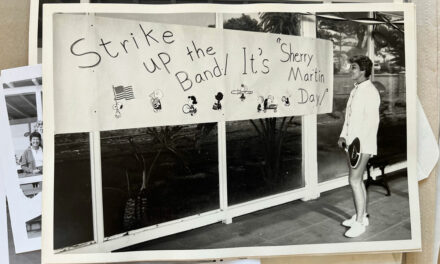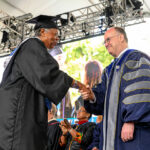
Go Ahead, Hit Me!
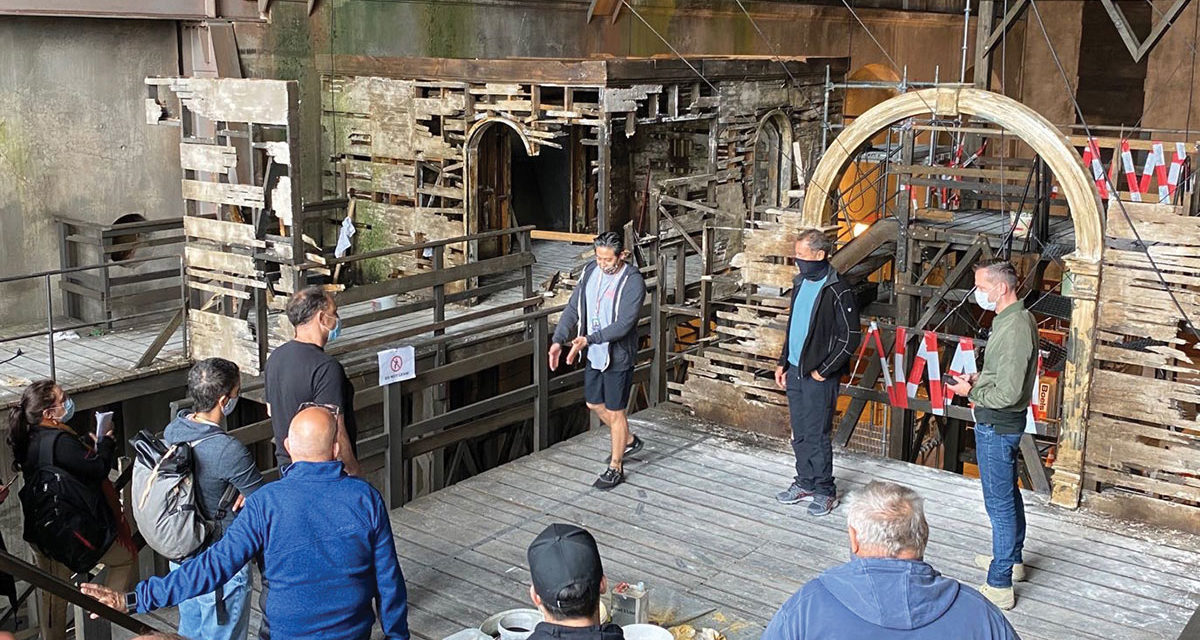
Go Ahead, HIT Me!
Don Theerathada ‘93 talks about his career as a professional stunt coordinator and fight choreographer for 87eleven Action Design
INTRO BY MELISSA ULSAKER MAAS ‘76
INTERVIEW BY ADRIENNE LAI ‘21
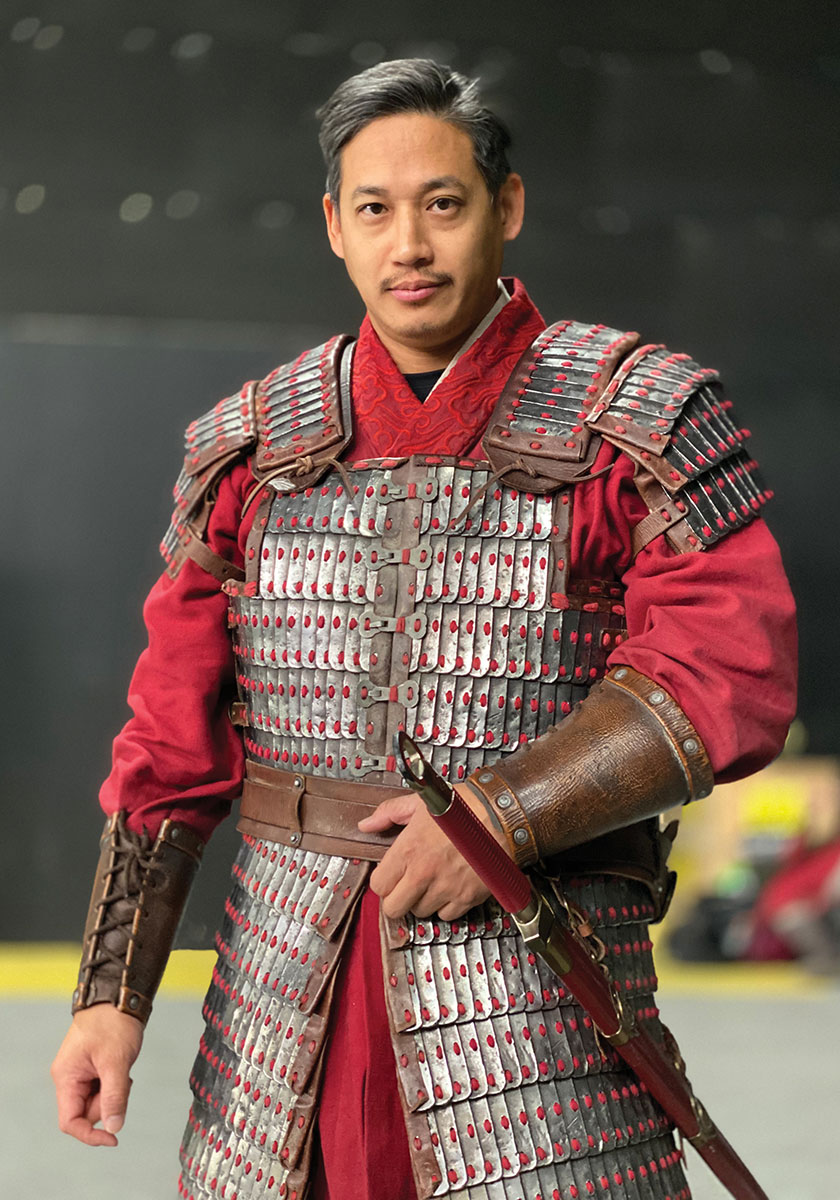
Don doubling as the character Po, played by Doua Moua in the 2019 Disney film, “Mulan.”
Don Theerathada loves jumping off buildings and getting hit by cars. A good day includes hitting the ground hard and taking a punch in the face.
During his 28-year career, Don has worked as an actor, stuntman, stunt coordinator, fight choreographer and second unit/action director on more than 100 feature films and television shows in the U.S. and Thailand, as well as commercials, music videos, and high-end video games.
It all started in 1984 after Don saw “Karate Kid” and immediately wanted to start Tae Kwon Do classes. By the time he reached Upper School, he was competing in the 1992 WKA World Championships on the U.S. team that won the championship and personally placing fourth in sparring. In 1993 his team took the championship again and he won the bronze medal in sparring. At that point he retired from competing professionally in the martial arts to focus on running track and field for George Mason University and to train and prepare for the 1996 Olympics in Atlanta. At GMU Don competed in the 110m High Hurdles for the Thai National Track and Field Team. Unfortunately, he blew his knee out for the second time while training for the 1995 Southeast Asian Games and found himself at a fork in the road. Already a national hero in Thailand, he was representing Nike, Tag Heuer, Ray-Ban, and Oakley in commercials. His notoriety as an athlete had brought in multiple offers to work in film and television, so without looking back, he decided to stay in Thailand and take up acting.
Although he was successful as an actor, Don quickly discovered he was not a “fan of fame and what came with it.” Meeting Jackie Chan inspired him to change his career path and pursue what he really loved doing. Stunt work combined his athletic prowess with acting, but outside the heat of the spotlight. In 1999 Don made another monumental decision to relocate to California, where he had to start over and rebuild his career. Today his credits include stunt and fight work on “The Fast and the Furious,” “The Expendables,” “The Matrix Resurrections,” “Aquaman,” “Mulan,” and most recently as the fight trainer for Ana De Armas and the stunt coordinator on the Russo Brothers film, “The Gray Man” (July 2022 release date). He is currently stunt coordinating additional photography on a Russo Brothers series for Amazon streaming and is already scheduled to stunt coordinate the next Russo Brothers film.
In 2014 Don married his wife, Mimi, who graduated from Tufts University School of Dental Medicine. They own and operate a dental practice in Westlake Village, California. When he has time off the set, Don loves motor racing. He used to prefer taking his motorcycles, but is now racing his cars. He enjoys barbecuing at home, watching movies, and, of course, working out, boxing, and sparring.
Adrienne Lai ’21 interviewed Don about his career in the following Q&A.
What do you have to keep in mind when designing a stunt/fight sequence/action sequence?
Those are three different things, stunt wise, first priority is safety. Figuring out how to execute a stunt gag and designing it to be the safest way possible. If the scene calls for someone to jump off a building, the questions are–how far do you want the fall, is he falling out of frame, is he going all the way to the ground? If we have time we try and possibly reinvent a method to give the director something that hasn’t been done. It all depends, some people want to do something different and some people don’t or we just don’t have time and we follow the tried-and-true techniques.
For fight sequences we have to see who the artist is and who we have available to double that artist. We design according to their strengths. No point in designing something we know won’t look good doing both artist and double. Then we have to develop a style for that person and try to come up with something new that is not played out.
For action sequences we have to help design something that would help compliment the story and characters of that story. I feel everything has to make sense in that world. If we are making a sci-fi film in space and these two aliens get into a fight, it doesn’t make sense, to me at least, for them to be doing kung fu on each other.
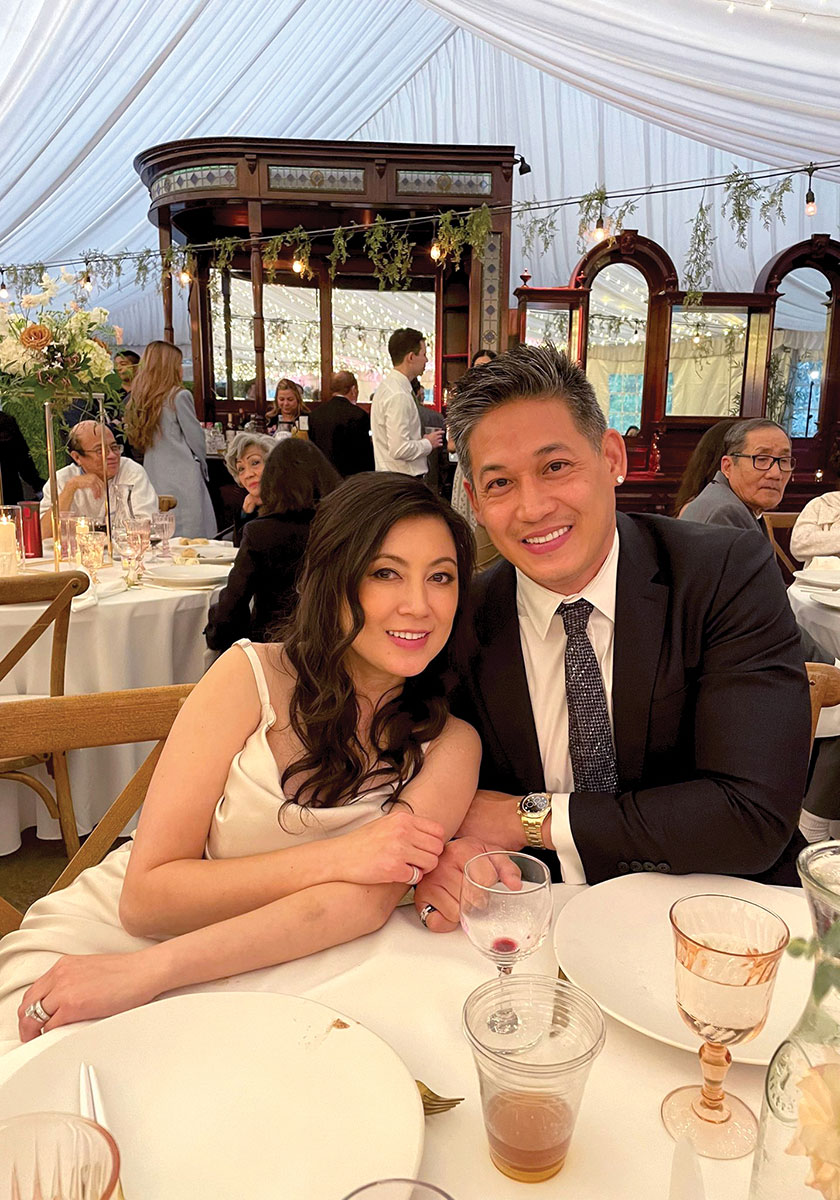
Don and his wife, Mimi, at their wedding in 2014.
What was the most exciting project you have worked on?
Wow, it’s hard to say, I’ve worked on a lot of projects from big to small, I would say, working on a project or with people that inspired me when I was younger that offers the nostalgic feel. For example, in Expendables 1 & 2, the script wasn’t the greatest, but all the old action stars I grew up with were in it. I was giving direction to these superstars and they were listening to me. It was really trippy. Matrix 4 was a project based on a series I grew up with. If I can work on a project that can inspire a new generation—which is what I’m striving for—that means more to me than the money they pay you. I love working on film more than a TV series because I like working on new stories and solving new problems.
What is it like working for a big-name movie series—is there a lot of pressure/attention?
Yes, the biggest pressure is failing. I always want the project I’m on to be amazing, but it’s not always up to me. Time, money, unforeseen issues are always coming into play, and everyone has their own vision. Some people on the project want to make it for the cheapest and fastest amount of time possible, but I want it to be the best movie we can possibly make. It’s stressful when you’re redoing a project or working on a famous series. There’s an expectation the audience is looking for and you’re already at a disadvantage as they expect a lot and want to be blown away. Again, everyone has a vision. We’ll design and create something and the directors or producers don’t want it. It’s not that they’re wrong cause it’s their project, but the answer to that is just making your own project. We at 87Eleven designed action for “John Wick” and pitched it for many other action films but in a way, it was turned down due to the risk of making your money back on an R rating. So, we eventually made our own “John Wick” film series and were part of the revolution showing that R movies can make money as well and that there is an audience for that. People are always scared to be the first to take a risk because it’s their career on the line, but you also don’t grow without taking risks. I’m a risk-taking guy, after all, I’m a stuntman.
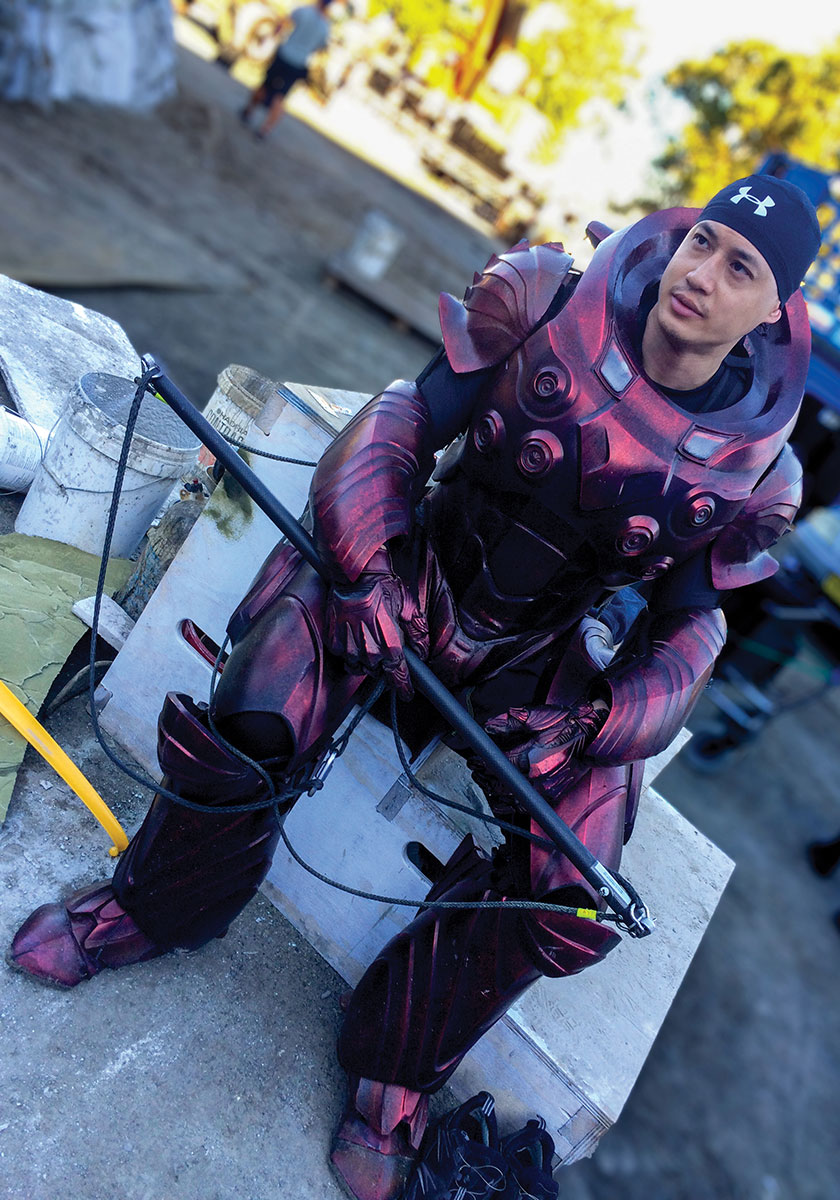
Working as part of the fight team on the set of “Aquaman” in Gold Coast, Queensland, Australia.
What are the biggest challenges you face in your job, and how do you overcome them?
The biggest challenge is that every new film is like opening a new company. It’s a new story, new actors, a new production team, and a lot of times a new action team. I always say I’m only as good as my team. Unfortunately, in each job, we can’t always carry the same team due to budget constraints. For instance, the project might take place in Asia and need an Asian majority team or need other ethnicities. The people I hire have to be able to do multiple duties to justify the money spent to carry them onto a project. Then you have the crew, which is a different team. In an ideal world we would keep working with the same team, crew, and actors, because after spending a lot of time with them, we all start to get into a good groove, and then the movie is over and we all move on to our next project and start all over again. The only way to overcome this is to understand this happens, problem solve, and learn how to incorporate everyone into a team mentality. Division never works and will hurt the final product, especially since we are all cogs in this intricate machine.
What is it like working with famous actors/actresses?
It’s not always what it seems. I work in a world full of alphas while managing and having to be alpha myself at times. I’ve been fortunate to work with a lot of really nice and cool people who listen and work with me to accomplish our goals. It’s always nice when working with stars that I idolized growing up, like Jackie Chan, Sly Stallone, Arnold Schwartzenegger, Jean-Claude Van Damme, cause there’s a nostalgia to it. The newer actors are cool and seem to always want to hang out with us, whereas with the long-established stars I mentioned, we kind of have a different type of respect when with them. Working with the ultra-famous
is a bit more annoying due to paparazzi issues. For example, working with people like Taylor Swift, you’re going to be dealing with a big posse and paparazzi hiding a mile away in a tree with ultra-long lenses trying to get shots. We have to constantly try and hide them and keep them from harm, which adds extra bodyguard type of work for us to deal with as opposed to just the creative aspect.
How does your job change with each project and medium you work with (movies, music videos, video games)?
The biggest difference is prep time. In big films we have a lot of time to prep and train artists and more time to enhance and polish concepts, whereas in music videos, TV, and commercials, we are very limited in time and money. For some films, we would have up to six months or more in prep. It’s funny, since we created the “John Wicks,” there was a point in time everyone said to make it like “John Wick,” but we have only one week to prep. They don’t realize we trained Keanu for nine months before we did the first “John Wick,” so working with someone who’s never done action before and getting them to look like “John Wick” is not a reasonable ask. It’s also funny because they ask for big-budget concepts that cost us hundreds of thousands to make, but want us to do the same thing for $5,000. Video games are cool and fun because we get to work in a nice air-conditioned controlled environment, and you can be very creative with execution since we can hide a lot of things with motion-capture cameras that you wouldn’t be able to hide with regular cameras. The hardest part is the amount of time to complete a video game. It’s sporadic. We could work a month on a video game, then they have to do the coding, rendering, and programming, and five months later see if we are available to come back and work more. The work timeline is not consistent and they can’t afford to keep us on hold for a three-year project.
What advice would you give to anyone interested in the movie industry (actor/tech)?
Really know and love what you want to do, and want and love it for the right reasons. A lot of people come into the business wanting fame and money, but if that’s your driving force you won’t last very long in this business. My team and I make good money, but when a paid project is done, we don’t just go play golf and party all day. We wake up at 4:00 a.m. to drive hours to train together for eight hours a day on our days off and we are constantly studying and expanding our skill set.
What does it feel like to watch the final project for the first time?
It can be scary, whether or not we are the ones who edited the footage or the final project. Everyone’s vision is different and a lot of times we are hoping the audience understands the outcome of the final product. We are constantly guessing if the audience truly understands and enjoys the execution of the product.
Do you have any on-set traditions?
I have a few, but I will share one. Before personally performing a very dangerous stunt, like jumping off a building or something, I am super focused on the task at hand, do a big yell to psych myself up, and right before I jump, I shrug my shoulders and in my head I say “go for it,” and I jump.
What is something that most people do not know about the movie industry, especially in relation to action films?
I don’t think anyone ever truly understands the workforce and prep time that goes into an action project, at least our projects since we do ours differently. People are starting to see more and more of the behind-the-scenes thanks to social media, but I don’t think it’s at the point where people understand what we do yet.

